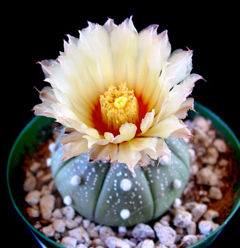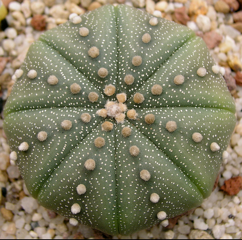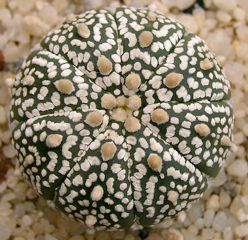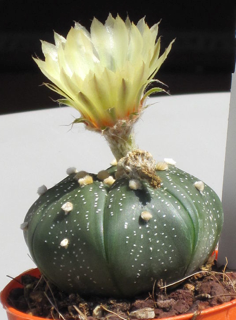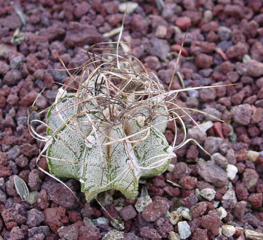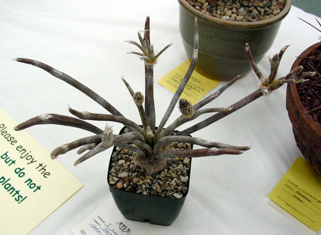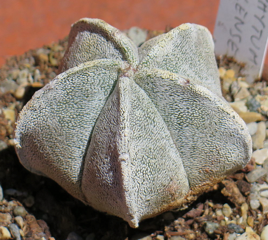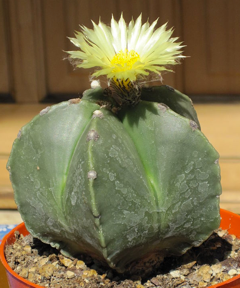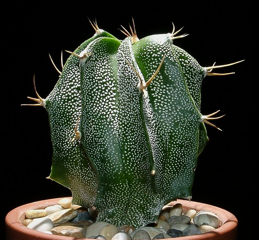Submitted by: Jim Tanner
The Astrophytum genus is comprised of 4 species of globose to short cylindrical cacti and one sprawling, octopus-like member. The first four were discovered between the years 1828 and 1845. Two of these are spineless and two have prominent spines. While each species is quite distinct, one from another these four feature a star-shaped appearance when viewed from above. Hence the name astrophytum, which means star plant. Astrophytum species have been frequently compared to marine life, in particular Astrophytum asterias for its striking similarity to sea urchins.
The fifth member of this group was newly discovered in 2001. Astrophytum caput-medusae is quite distinct from the other members of the genus and actually very distinct from all other cacti genera as well. Hence, many enthusiasts feel it should be part of its own genus and consider it to be the sole species in the genus Digitostigma. The name Digitostigma describes the long digit-like tubercles that grow something like an octopus.
Despite the noticeable differences, all 5 species including caput-medusae feature a sort of flocking of white trichomes (or bumps) on the epidermis. Although in cultivation some forms are bred for their lack of flocking. Plants in this genus also all have yellow flowers with fuzzy floral tubes. Some have a red-centered flower, all are radially symmetric and eventually turn into dry, fuzzy seed pods bearing relatively large, black seeds that are among the easiest to germinate.
The four original astrophytum members have been extremely popular in cultivation and numerous exotic hybrids have been created that accentuate various features such as amount of flocking, number of ribs, lack of spines, etc. With the uniqueness of caput-madusae coupled with it’s late discovery, it is currently one of the most sought after cactus species by collectors world-wide. And in that sense, it is fits in quite well with the other astrophytum species.
Astrophytum is a Chihuahuan desert native occurring in north/central Mexico and southern Texas, USA.
The generic name “Astrophytum” derives from the Greek words astron, meaning a “star” and phyton, meaning “plant”. The Genus name implies: “star plant”.
[Ed: Many wonderful hybrids and cultivars have been produced in Japan, particularly those of A. asterias and A. myriostigma. ‘Super Kabuto’ below is one example.]
LATIN LOOKUP – Loquerisne Latine (Do you speak Latin)?
The meanings of latin plant names on this page – from http://davesgarden.com/guides/botanary/
- asterias [ass-TEER-ee-as]
Starred. - Astrophytum [ass-troh-FY-tum]
From the Greek astro (star) and phyto (plant). - capricorne [kap-ree-KOR-nee]
Like a goat’s horn. - caput-medusae [KAY-put me-DOO-say, KAY-put me-DOO-see]
Medusa’s head, referring to the Greek mythological figure. - coahuilense [kwa-wee-LEN-see]
Of or from Coahuila (Mexico. - myriostigma [my-ree-oh-STIG-muh]
From the Greek myrios (many, countless) and stigma (thorn, point). - nudum [NEW-doom]
Nude, naked. - ornatum [or-NAH-tum]
Ornate, adorned.
